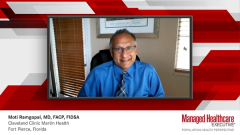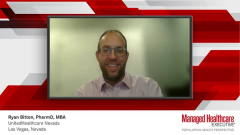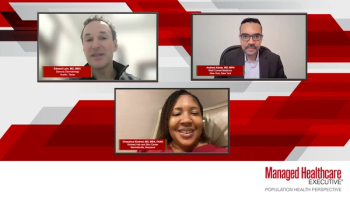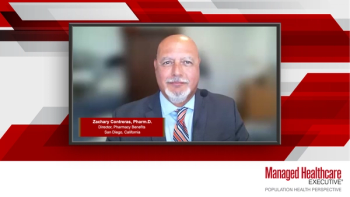
HIV PrEP and Multidisciplinary Care
The advantages of coordinated care between multiple health care providers when managing patients on HIV PrEP therapy.
Episodes in this series

Moti Ramgopal, MD, FACP, FIDSA: Multidisciplinary management for a patient on PrEP [pre-exposure prophylaxis] is very critical. Just as we do with HIV, we look at what that patient, as an individual, requires. Some patients may be fine with their medication. Some patients may be fine with their mental health issues. I also have what we call a peer navigator—someone who’s on PrEP who also can speak to that patient with difficulties of accessing PrEP or who say, “I’m tired of taking a pill.”
This is where we use the team approach. We look at patients who are not in care; for example, they missed an appointment. We send them a ping on their phone with their appointment follow-up. What’s the reason for the missed appointment? We try to get ahead of it instead of waiting. The initial patient assessment is important. We need to understand the patient and why they’re going to PrEP, making education a big piece of this. We need to recognize patients who don’t come in may have stigma concerns, as I mentioned. They have fears. What are the infection rates? What are their friends doing? It’s important to address all these concerns very early.
The pharmacist’s role is make sure they can get a patient system program certified, looking at their income and the other challenges they’re facing. The social worker can also bring that into the game. As a provider, when I meet a patient for the first time, I try to understand their need. I assess that patient and try to find the challenges that are going to make them fail treatment down the road. Is it going to be compliance? Is it going to be stigma? Is it going to be recognizing the lack of comfort in the clinic? They’re not comfortable coming back for medication? They’re not comfortable speaking to the provider? These are the challenges we have to identify very early.
The team-based program provides several benefits because it allows the patient to see that it’s not 1 person involved in their care but many layers of management. There are many layers of interest in what’s going on in their life, with their risk behavior and other factors. Imagine going into a room and you have 1 provider. Then somebody comes in with a different personality and energizes the room in a different way. Everyone has a different part in the conversation—the peer navigator, the pharmacist, the social worker. Everyone will create that environment so the patient will feel comfortable, recognizing that this isn’t a game. This is a serious project.
It’s a project in which we need to reduce as many new HIV infections as possible. I look at my community in St. Lucie County, Florida. I look at how many people are on PrEP and how many aren’t. Every time a patient presents with HIV, I say, “Who’s your partner? Is your partner positive or negative? What’s the high-risk relationship? How can we get your partner into care on PrEP?” We’re seeing a lot of social behavioral changes during COVID-19. Promiscuity is increasing. There’s a lot of group behavior that we’re beginning to recognize in our patient base—they may go away for weekends as a group and go to a different part of the state.
These are patients we reach out to when we talk about getting people into care. We reach out to these patients and say, “Bring your partner in. Bring your friends in. Let’s get them on PrEP. Here’s team support. We have mental health support. We have a substance abuse counselor. We have a pharmacist.” They will probably understand how to connect with these patients. As a physician in my mid-50s, I don’t understand a lot of these behaviors.
That’s why it’s important to have younger people on the team who can converse with our patients, especially at checkout. A younger person at checkout can understand these patients and their questions. It creates a level of comfort for these patients when they come into the clinic.
Transcript edited for clarity.
Newsletter
Get the latest industry news, event updates, and more from Managed healthcare Executive.

























































